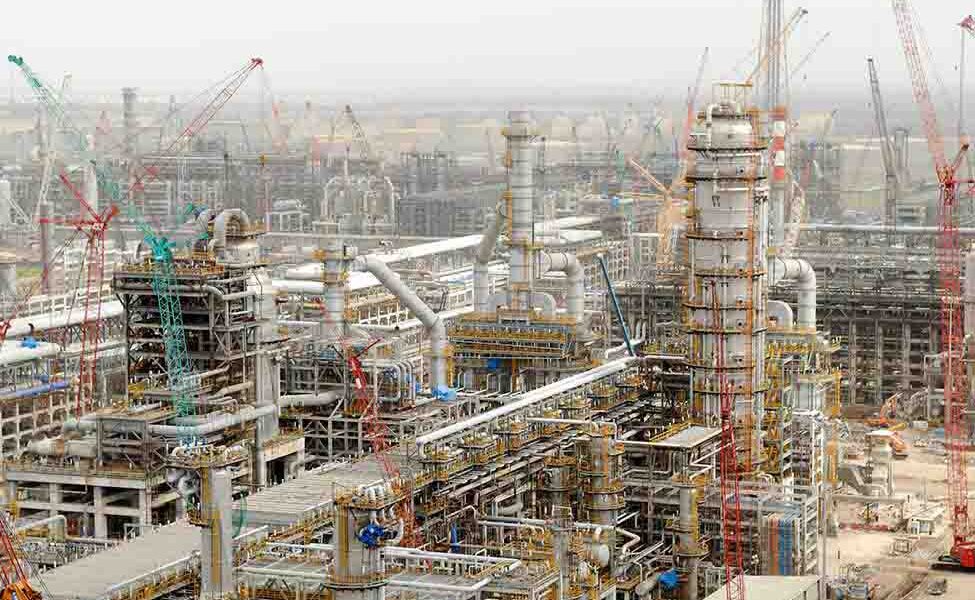PGCIL may construct dedicated line for Reliance’s Jamnagar petroleum refinery
- January 10, 2022

In a very recent order, Central Electricity Regulatory Commission (CERC) has given Reliance Industries Ltd (RIL) the option of approaching Power Grid Corporation of India Ltd (PGCIL) for constructing a dedicated power transmission line associated with Reliance’s petroleum refinery in Gujarat.
The detailed order by CERC is based on recommendations of Central Transmission Utility of India Ltd (CTUIL) and the Western Region Power Committee. Both these entities have been deliberating on the issue ever since RIL first formally sought the dedicated line in around October 2020.
Background
Reliance Industries Ltd is seeking a dedicated transmission line connected to the ISTS (interstate transmission system) to source 500 mw of renewable energy-based electricity, which the company would like to use to meet its renewable purchase obligations (RPO).
The company has a petroleum refinery located Jamnagar in Gujarat. This refinery, with a total load of 1,450 mw, is equipped with a 1,750-mw captive power plant.
RIL is now seeking to construct a 400kV double-circuit dedicated transmission line (of 60 km or 120 ckm) connecting the existing Jam Khambaliya pooling substation of ISTS. Besides, RIL will build a 2×250 MVA, 400/220kV substation at the Jamnagar refinery end. This substation will be then connected at four locations, through underground cables, to the existing 220kV captive power grid already present at the Jamnagar refinery complex.
The legalities
There are several provisions in the existing regulatory framework. Among the important one is that since RIL was seeking 500 mw of power, a quantum that exceeds the minimum 100 mw, it qualifies as a “bulk consumer”. Hence, connectivity per se, can be granted. However, since RIL is a bulk consumer and not a power utility/generator itself, RIL is not eligible to “plan” the transmission line. Such planning of ISTS-based lines is done by CTUIL. On its part, however, CTUIL has approved the development of such a dedicated line.
The remaining question is that of construction of the dedicated line. Since RIL is a bulk consumer and not a transmission licensee itself, it cannot construct the line on its own.
Two options
CERC has given RIL two options. First, it can form a special purpose vehicle (SPV) that can apply for transmission licence. This subsidiary can build the dedicated transmission line, and the financials (transmission charges) can be worked out between RIL and the SPV. Second, RIL can approach any existing transmission licensee – PGCIL or any other licensee – that can build the dedicated line. The cost of the line, of course, will be borne by RIL.
In a meeting held in October 2021, RIL showed inclination to pursue the PGCIL route for the dedicated line as the project implementation could be fast-tracked. In this case, the line will technically be awarded to PGCIL on “nomination basis”. It may be noted that though RIL will be bearing the expenses of constructing the line, the asset will be owned by PGCIL. The payment security mechanism and transmission charges will be worked out between RIL and PGCIL.
Also read: CERC Adopts Tariff Under Pilot Scheme For Medium Term Procurement
Project Cost
CTUIL has worked out the project cost of the dedicated line at around Rs.114 crore, based on September 2020 prices. The project includes the 400kV double-circuit line from Jamnagar to Jam Khambaliya GIS pooling station (60 km) and two 400kV line bays at Jam Khambaliya GIS pooling station. The project cost does not include the infrastructure to be constructed at the Jamnagar refinery end, which, in any case, will fall under RIL’s purview.
Featured photograph (source: bechtel.com) is a file picture of Reliance Industries’ petroleum refining complex at Jamnagar, Gujarat, whilst under expansion. Photograph is for illustration only.


